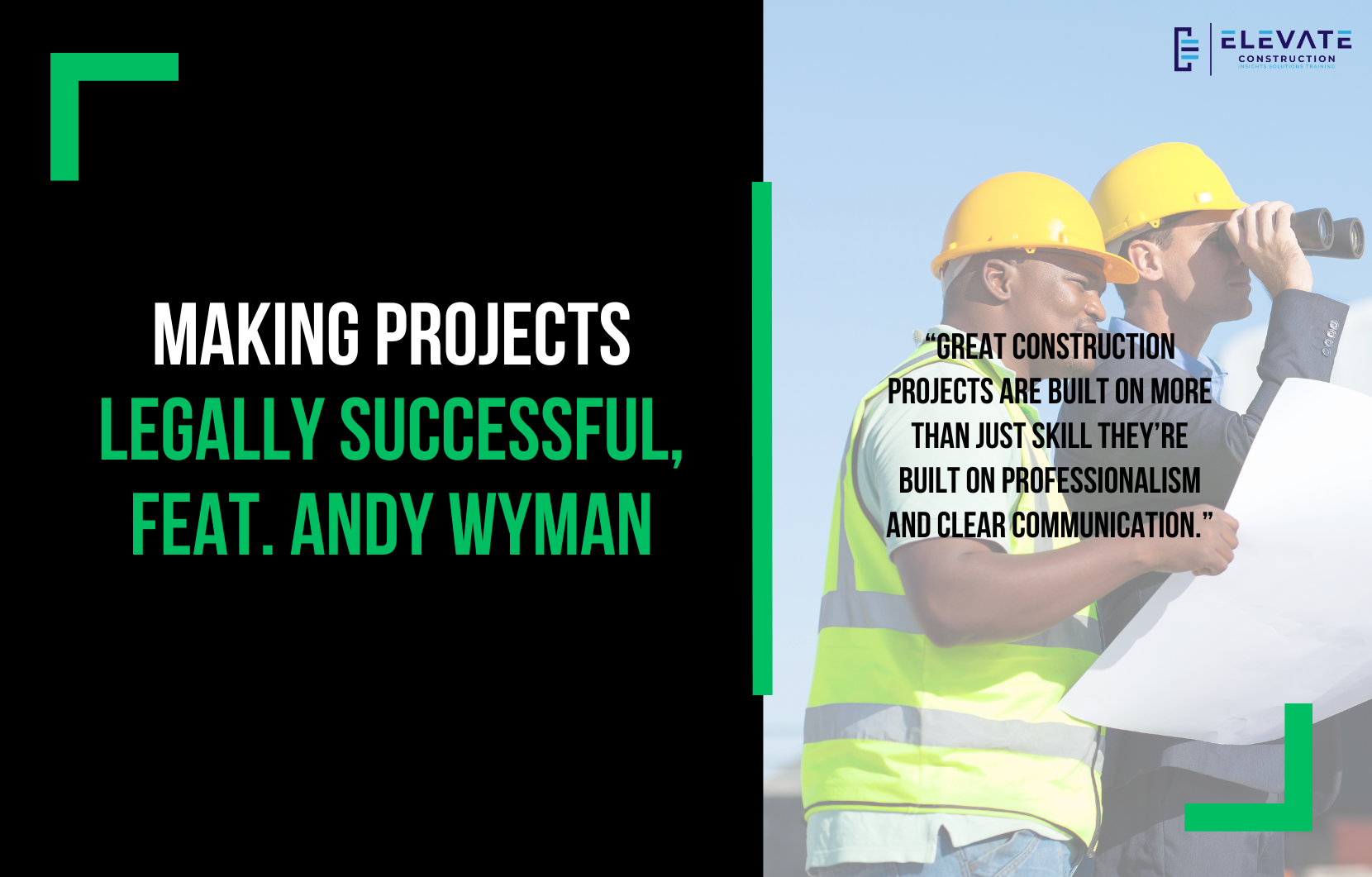How Contractors Can Set Projects Up for Success Legal and Communication Insights with Andy Wyman
In this blog, we dive into a powerful and practical conversation with construction attorney Andy Wyman, who shares his legal insights and business experience to help contractors and owners alike set their projects up for success. Andy’s firm, Wyman Legal Solutions, works with both contractors and owners, giving him a uniquely balanced perspective. Below, we’ve captured key takeaways and real-world advice from our recent discussion.
Communication is Everything From Day One
Andy emphasized one critical truth, most owners, especially residential clients, have no idea how construction projects work. They don’t know the process, the risks, or even the basics of what to expect. That’s where contractors can stand out immediately by becoming the “tour guide” for the project. Just as a law firm explains each step of a legal matter to a new client, contractors should clearly outline what will happen next, when, and why.
“This is the perfect opportunity for contractors to build trust. Don’t assume the owner knows the process walk them through it.”
This builds confidence, reduces fear, and can set the tone for a collaborative relationship. Communication upfront is the foundation for successful outcomes and fewer disputes.
Miscommunication, Most Lawsuits
Andy shared a sobering truth, nearly every construction dispute stems from poor or unclear communication. Whether it’s commercial or residential, unmet or unspoken expectations are usually at the heart of the problem.
This is why regular communication, clear expectations, and aligned goals between the owner and contractor (like conditions of satisfaction and project charters) are non-negotiable. Even something as small as missing a deadline without calling to explain can start the erosion of trust.
“How you do anything is how you do everything. Missing small deadlines without notice is a red flag.”
Be Proactive, Not Reactive Legally and Operationally
Legal problems often arise after things go wrong, but the best contractors are thinking about legal protection before the project starts.
- Have a well drafted contract that sets clear, fair expectations and supports project success not just legal defense.
- Understand lien laws in your state. For example, in Florida, subs must send a Notice to Owner within 45 days to preserve lien rights. That notice isn’t aggressive it’s smart business.
- Present yourself as a professional. Your contract should be clean, consistent, and free from typos. Avoid Frankenstein documents stitched together from old templates and internet downloads.
“A sloppy contract tells a client you’re not a professional. A clean, clear, fair agreement sets the tone for everything.”
Contracts Should Enable, Not Divide
This is a key mindset shift: contracts should make collaboration easier, not create friction. The best contracts:
- Clarify expectations
- Define fair consequences
- Include dispute resolution mechanisms on the ground so decisions can be made swiftly, without escalating into lawsuits
If a problem arises, you don’t want to default to court. A contract that empowers a local decision maker or neutral third party (before litigation or arbitration) can keep projects moving forward.
“Write a great contract and stick it in a drawer that’s the goal. You hope you never have to look at it again.”
Invest in Your Business Not Just Your Tools
Andy’s final challenge to contractors was simple but powerful, Treat your construction business like a real business.
This means having a team of trusted advisors: a construction attorney, business coach, accountant, insurance broker, and more. Many contractors got into the business because they were great with their hands but building a business requires a different skill set.
“Don’t look at professional help as a cost look at it as an investment in your business success.”
Final Thoughts
Success in construction doesn’t just come from doing great work it comes from building great relationships, having clear and fair contracts, and proactively managing risk before it turns into a problem.
Andy Wyman offered a deep, experienced perspective that blends legal savvy with practical, boots on the ground business wisdom. If you’re a contractor who wants to grow, lead, and protect your business, his message is one worth taking seriously.
Key Takeaway
Great construction projects are built on more than just skill they’re built on professionalism and clear communication. Establish trust early, clarify expectations, use professional, well drafted contracts, and proactively address risks. From the way you show up to how you handle delays or disputes, every interaction sends a message about your credibility. Contractors who lead with integrity, consistency, and professionalism are the ones who build trust, avoid litigation, and win repeat business because the best legal protection is not needing it at all.
If you want to learn more we have:
-Takt Virtual Training: (Click here)
-Check out our Youtube channel for more info: (Click here)
-Listen to the Elevate Construction podcast: (Click here)
-Check out our training programs and certifications: (Click here)
-The Takt Book: (Click here)
Discover Jason’s Expertise:
Meet Jason Schroeder, the driving force behind Elevate Construction IST. As the company’s owner and principal consultant, he’s dedicated to taking construction to new heights. With a wealth of industry experience, he’s crafted the Field Engineer Boot Camp and Superintendent Boot Camp – intensive training programs engineered to cultivate top-tier leaders capable of steering their teams towards success. Jason’s vision? To expand his training initiatives across the nation, empowering construction firms to soar to unprecedented levels of excellence.
On we go










